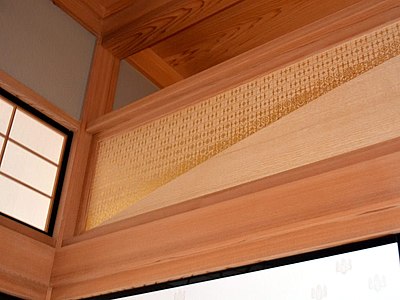
Search
Kirikane

Kirikane (截金) is a Japanese decorative technique used for Buddhist statues and paintings, using gold leaf, silver leaf, or platinum leaf cut into lines, diamonds, and triangles.
History
Kirikane was imported from China during the Tang dynasty (618–907). The oldest example is Tamamushi Shrine at Hōryū-ji. Kirikane flourished primarily in the 11th century and continued until the 13th or 14th century. After that, however, kirikane almost disappeared, due to the overall decline of Buddhist art.
Technique
Two pieces of leaf (gold or silver, platinum) are heated over an ash-banked fire and bonded together. An additional bonding is then done to further strengthen the leaf and add thickness. Next, the bonded leaf is cut with a bamboo knife on a deer-skin-covered table, then affixed with glue (seaweed glue, funori and hide glue, nikawa, etc.) to the object to be decorated.
See also
- Eri Sayoko, Living National Treasure for kirikane
- Buddharupa
References
Bibliography
- Sayoko Eri Kirikane World -Brilliance and Romance of Gold Leaf - ISBNISBN 4-915857-59-X
External links
Media related to Kirikane at Wikimedia Commons
- Heian Bussho (平安佛所)
Text submitted to CC-BY-SA license. Source: Kirikane by Wikipedia (Historical)
Owlapps.net - since 2012 - Les chouettes applications du hibou



